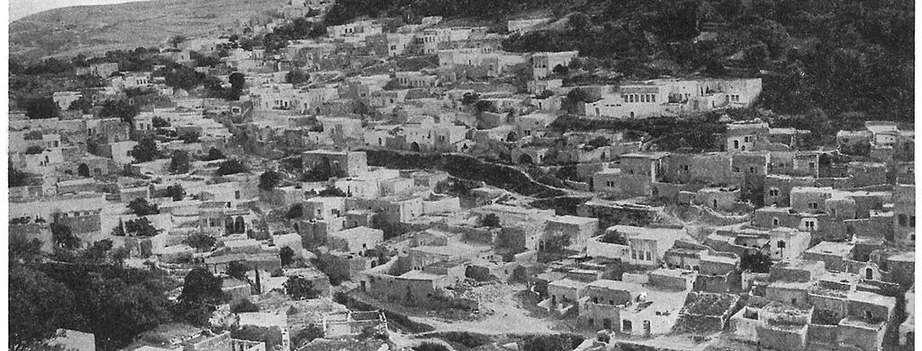
5 minute read
Folklore: Before 1948, a prosperous vast history planted its roots into the land.
“The land we carry in our blood” - Mahmoud Darwish. Those words represent the truest identity of the Palestinian people. Despite their diaspora, they were never hindered from always being connected in some way or another to their homeland.
The Palestinian culture is well known for being quite the family-loving type, their migration did not wipe from their memories their family-oriented nature. Instead, some people are known to host gatherings every week. Furthermore, as a part of their traditions, people would take off their footwear before entering the house of the people they are visiting. Moreover, respect represents an important factor in their culture, which I personally see depicted in the elderly living with their eldest sons.
Palestinians generally have been through endless conflicts during the British ruling; however, this did not stop them from excelling in endless fields. Personally, I believe that it is the land of prosperity. For starters, they were famous for exporting citrus, olives and even oranges from Jaffa. Oranges were a popular fruit during the late 19th century in Northern Europe before the invention of refrigerators. Fun fact, Olives have been discreetly associated with Palestine that it almost became like a symbol for it.
Their ability to export a diverse group of products was attributed to them being one of the first agricultural sites globally. However, Palestinians were not solely the reason for their brilliant reputation in agriculture; rather it was nature along with the hardworking Palestinian farmers. Nature has spoon-fed the Palestinian farmers, through its idealistic environment, like having a suitable atmosphere or landscape.
We have Ayman, a farmer from Gaza, longing for his history and people, Ayman decided to go back to the traditional organic Palestinian farming methods. Stating “With my strawberries, I am trying to bring back the old days and underscore the need to alter the farming culture here, away from fertilizers.” This pulls us back to our point of Palestine being the ground for one of the first agricultural sites globally.
Nevertheless, we cannot turn a blind eye to Palestine being a haven for endless ethnicities and religions throughout the years. Being quite the definition of inclusivity, it even had nomadic tribes, which set the stage for their heterogeneous facial features. Back in the day, their official languages were Aramaic and Greek; but nowadays it is Arabic of Levantine dialect, proving again the point of acceptance of people from all walks of the earth.
Being the sacred land is a title that was not given to it aimlessly. Indeed, it is the mother of 3 religions Islam, Christianity and Judaism, which is a unique combination that does not happen all the time. Hebron; a city in the west bank where the tomb of Abraham lies. Our beloved Jerusalem alone is a place that united three religions in one place; by Al Aqsa Mosque for Muslims, the ancient first and second temple for Jews and the birth of Jesus Christ for Christians.
Additionally, Palestinians being the intellects they are, have smartly seized the abundance of stones to build their homes; rather than using timber.
Besides, we cannot talk about the culture without mentioning the traditional clothing that is made out of cotton or linen. Interestingly, there was an observable difference between the clothes depending on classes and the place where those people come from. Whether they are urban, rural or Bedouin people. Sandals are the traditional footwear for men. Unfortunately, the traditional male style such as tunic and ottoman started to vanish slowly in the early 20th century; as it got westernized over time.
The strength of the Palestinians never fails us, the “Dabkeh” was only a traditional dance for the Palestinians till the 1970, after that it became a form of resistance.
The prior examples, shed the light on some of the facts about the Palestinian culture. However, what we are seeing now is a mass wiping of the Palestinian culture, with the addition of spices for some flavor. This description was not given haphazardly; rather, it was well earned by the most entitled and most deserving round of applause which is the “Cultural Appropriation”.
A lesson learned through the years, if conflicts can prove one thing, is that culture is the one most prone thing to be hanging by a thread in most cases. The cultural appropriation goes back to 1948, to Al Nakba (Catastrophe) where 90 percent of people got displaced from their homes and sent to the terminal, banished from their lands.
The massive destruction of various historical and religious sites, like the two mosques in the Moroccan Quarter of Jerusalem on the 6th of June 1967, for the mere purpose of rebuilding a narrative is another example of cultural appropriation.
Palestinians were famous for their unique embroidered dresses and clothes. Since they had to leave everything behind, they did the same with these clothes. To our utter dismay, the settlers claimed their ownership of these clothes.
Not only was the traditional clothing wrongly attributed; but also was the food. Since the 1990s food has been mislabeled in various restaurants all over Europe and the US. For instance, hummus or couscous, tabbouleh and even fruits have been widely seen in supermarkets, shops, etc. being misbranded.
In addition, in the eighteenth century, prickly pear cactuses were imported from Mexico to Palestine. Cactus means in Arabic Sabr, which is used also for patience in Arabic. During summer, Palestinians use them as a form of representation of perseverance of their culture by eating them. Then again, comes the appropriation by falsely connecting it with being “rough and tough”.
The least of what we could do to honour the Palestinian people is talk of their stories, their true history and rich culture. Hoping that their message would reach everyone and that they are never forgotten.




